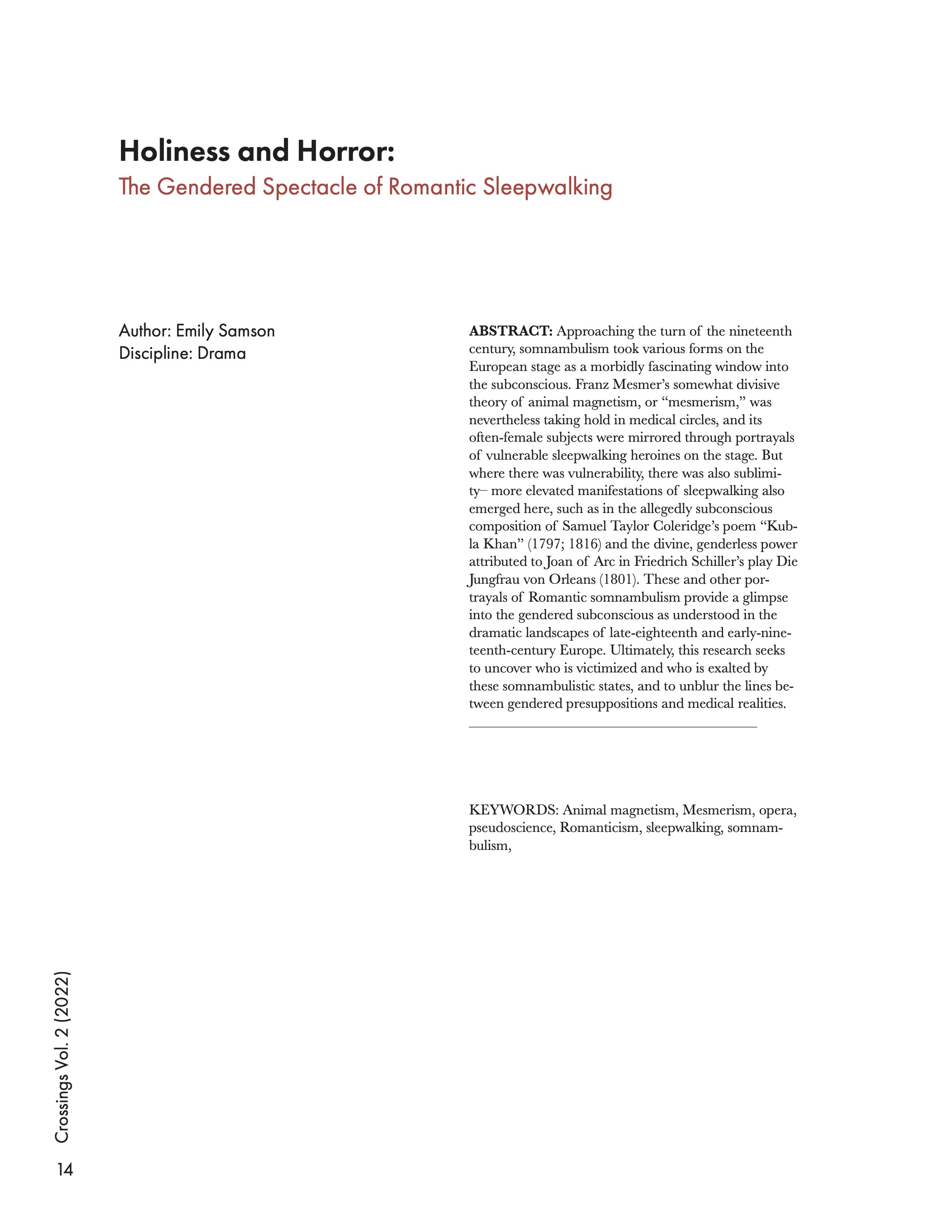Holiness and Horror: The Gendered Spectacle of Romantic Sleepwalking
DOI:
https://doi.org/10.29173/crossings73Keywords:
somnambulism, sleepwalking, Romanticism, Samuel Taylor Coleridge, Joan of Arc, Vincenzo Bellini, animal magnetism, mesmerism, Franz Mesmer, gender, Kubla Khan, La sonnambula, mysticism, sleep states, dreaming, Antoine Reicha, Marianne Kirchgessner, opera, pseudoscience, poetry, Friedrich SchillerAbstract
Approaching the turn of the nineteenth century, somnambulism took various forms on the European stage as a morbidly fascinating window into the subconscious. Franz Mesmer's somewhat divisive theory of animal magnetism, or "mesmerism," was nevertheless taking hold in medical circles, and its often-female subjects were mirrored through portrayals of vulnerable sleepwalking heroines on the stage. But where there was vulnerability, there was also sublimity– more elevated manifestations of sleepwalking also emerged here, such as in the allegedly subconscious composition of Samuel Taylor Coleridge's poem "Kubla Khan" (1797; 1816) and the divine, genderless power attributed to Joan of Arc in Friedrich Schiller's play Die Jungfrau von Orleans (1801). These and other portrayals of Romantic somnambulism provide a glimpse into the gendered subconscious as understood in the dramatic landscapes of late-eighteenth and early-nineteenth-century Europe. Ultimately, this research aims to uncover who is victimized and who is exalted by these somnambulistic states, and to unblur the lines between gendered presuppositions and medical realities.

Downloads
Published
Issue
Section
License
Copyright (c) 2022 Emily Samson

This work is licensed under a Creative Commons Attribution 4.0 International License.

